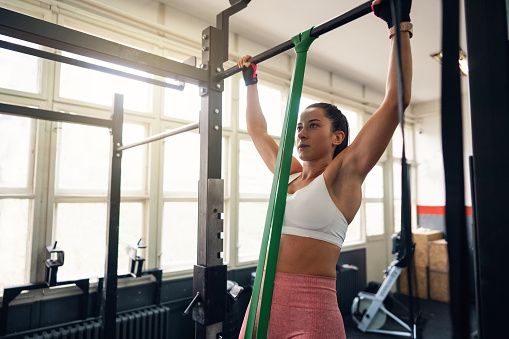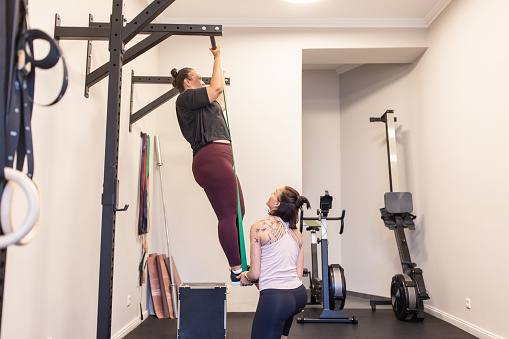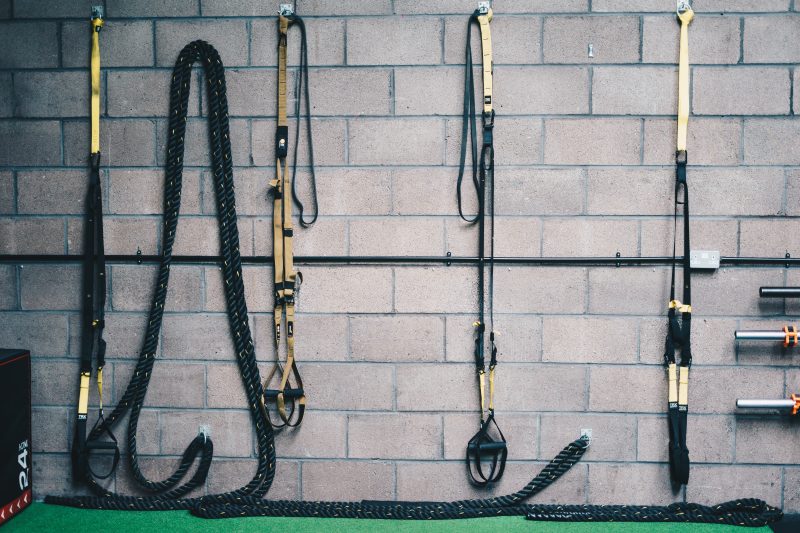Resistance band bars are a non-intimidating approach to start experimenting with muscle-busting exercises, before moving on to dumbbells or the barbell for size gains.
However, if there’s anything that can be taken away from the advantages of resistance bands. It’s that a simple piece of equipment shouldn’t be limited to someone who is new to strength training. They should be in the equipment closet of even the most seasoned athlete. Here are some key points about this underappreciated exercise tool that trainers would like you to know.
- Resistance bands provide variable resistance throughout the full range of motion. This means that the muscles are working harder at the weakest point in the range of motion, which can help to improve strength and muscle growth.
- Resistance bands are great for functional fitness exercises. They can be used to mimic natural movements and sport-specific actions, which can help to improve athletic performance.
- Resistance bands are safe to use and can help to reduce the risk of injury. They are also a good option for people with joint pain or injuries.
Table of Contents
What Are Resistance Band Bars?

Resistance bands are used to strengthen and/or stretch muscles for a variety of reasons. Including aesthetics, athletic performance, and physical therapy.
Types Of Resistance Band Bars
- Resistance Bands with Handles – These band handles are designed for working out and gaining muscle strength and size. The handles offer a solid grip, allowing you to perform a variety of exercises. Similar to those done in the gym with free weights or machines. The bands are welded together by means of carabiners to allow the user to build resistance levels as required.
- Therapy Flat Resistance Bands – These are often seen in therapy offices, such as physical therapists and sports therapist clinics. They’re wide and flat, making it simple to wrap your hand around them. And change the length without difficulty, and they can also be cut into smaller lengths or used to stretch. These bands are often used in Pilates exercises for extra resistance and may be utilized for general strength training.
- Loop Bands – Tight-fitting bands that form a closed loop, similar to therapeutic bands, but are smaller. These are primarily used for leg and buttock strengthening. These can be found in most gyms and physical therapy clinics.
- Leg & Arm Tube Resistance Bands – Closed-loop hollow bands come in a variety of styles. Including leg bands with figure-8 and ankle cuffs forms with support for the upper body. These are more muscle-specific and restricted in scope than open-loop tube bands.
- Power & Mobility Bands – These strong bands are most often used for cross-training and powerlifting. They’re also useful for stretching and treating mobility problems, as well as resistance training with different levels of difficulty.
Benefits Of Using Resistance Band Bars

Greater Muscle Stimulus
The variable resistance is applied throughout the complete range of motion of an exercise. It is one of the most significant distinctions between free weights and resistance bands. At the top of a bicep curl, for example, because of the lack of gravity. There are portions when the muscles aren’t working much due to the lack of gravity with free weights. This means that while using resistance bands. “The muscle is receiving more resistance at its strongest point in the range of motion. And therefore is getting a stronger stimulus to induce strength improvements.”
Great For Functional Fitness Exercise
Resistance bands, unlike gym equipment, can be stretched and pulled in a variety of ways, so you’ll progress your motor control and coordination as you use them.
Resistance bands have several other advantages beyond the ability to build muscle. They provide more planes of resistance than dumbbells, allowing you to do a wider range of workouts. “Free weights are limited by gravity in the way that they can only provide resistance in a vertical direction. The direction of gravity,” Steele says. “Unlike free weights, bands do not need gravity to provide resistance. “This aids in their adaptation to more functional movement patterns that mimic natural activities, and sport-specific actions.”
Same Muscle Activity, Less Chance Of Injury
According to Strength and Conditioning Research, elastic-band training delivers comparable and sometimes greater muscle activation than weightlifting. The major difference is that it uses less force on the joints. Allowing for more muscular stimulation with reduced risk of harm. This also bodes well for individuals who have prior injuries or joint discomfort. Since resistance bands may allow you to continue working out and performing activities that you can’t do with dumbbells.
Incredibly Safe To Use
Yes, you won’t have to worry about dropping a weight on your foot. But resistance bands come with a slew of other advantages. “Weight training can put a lot of strain on your muscles, tendons, and ligaments,” says Bollig. “With resistance band training, you’re in control the entire time. You won’t worry about vibrating weights and will be able to protect your tendons and ligaments by controlling your muscles throughout the whole movement since you aren’t worried about vibrating weights.” When you can’t do another squat with a heavy barbell, it’s possible that your muscles will give out before you’ve safely off-loaded the weight. This is why there are so many sports injuries. But if your body can’t manage another resistance band squat, simply remove yourself from the rubber and you’re done.
Improved Strength & Athletic Performance
The increased load, variable resistance, and instability of power resistance bands make them ideal for athletic training. According to research published by TheSportJournal.org. “For years, experienced powerlifters and strength and conditioning specialists have claimed that. Elastic band resistance combined with traditional training results in strength gains”. After using bands, a squat test with elastic tension showed that the bench press improved by more than double. And the back squat one-repetition maximum went up by nearly three times. “The resistance band group’s average lower body power increase was almost three times greater than that of the free-weight only group.”
Help Modify Or Progress An Exercise
A pull-up bar isn’t the best place to maximize your upper body development. So, if you can’t gradually lift your body up in a controlled movement. Add a long loop resistance band to the bar and step into it. “The band will assist you in the range of motion when you’re weakest. And then help you reach the point where you can do that single rep on your own, and from there. It’ll help you progress to the point where you can do a full pull-up,” Steele adds. The band will stretch out as you lower to the ground. And it will recoil as you pull up to the top in order to assist you to shoot back up to the bar.
To know more about Hip Thrust Machine: How It Helps To Build Glutes click here.





